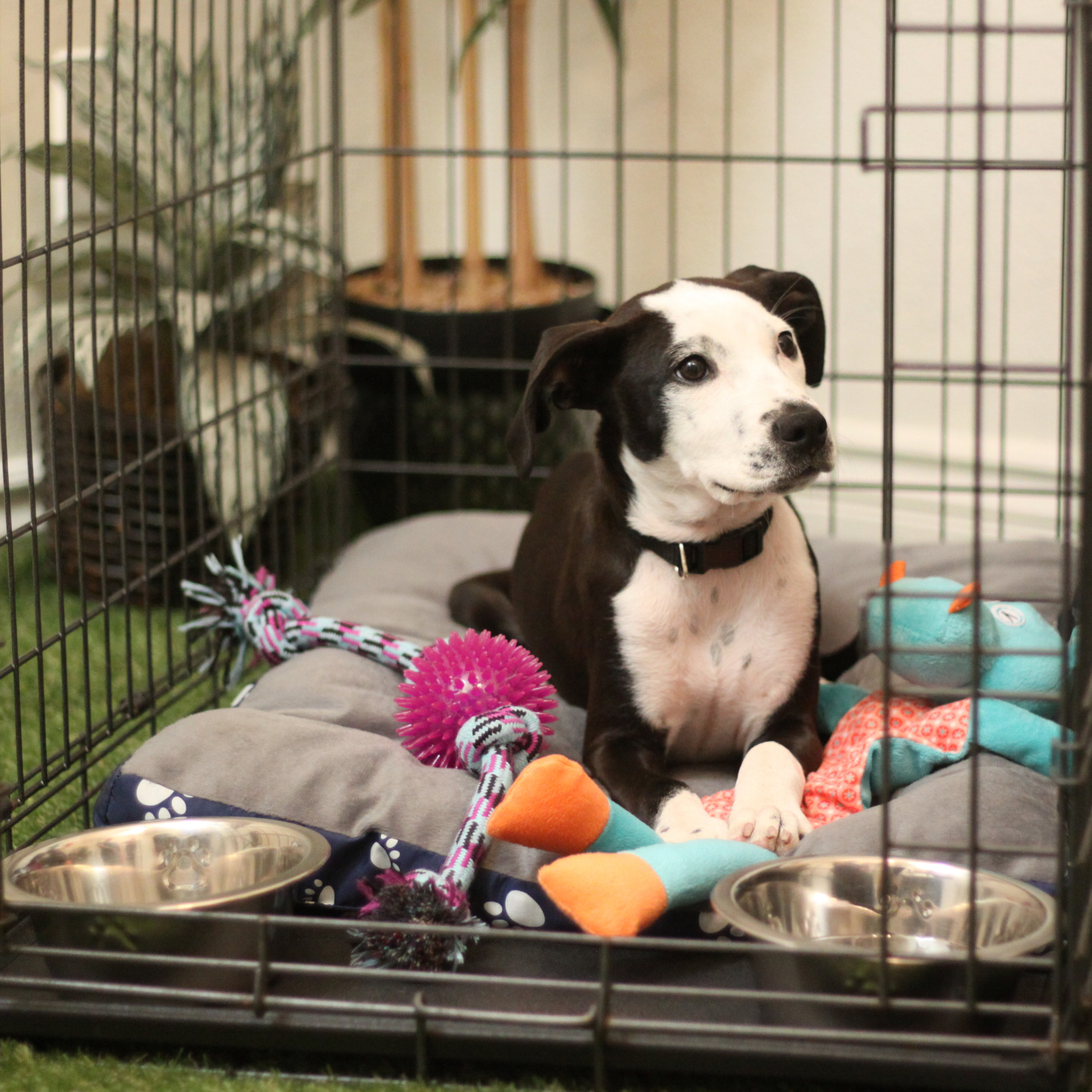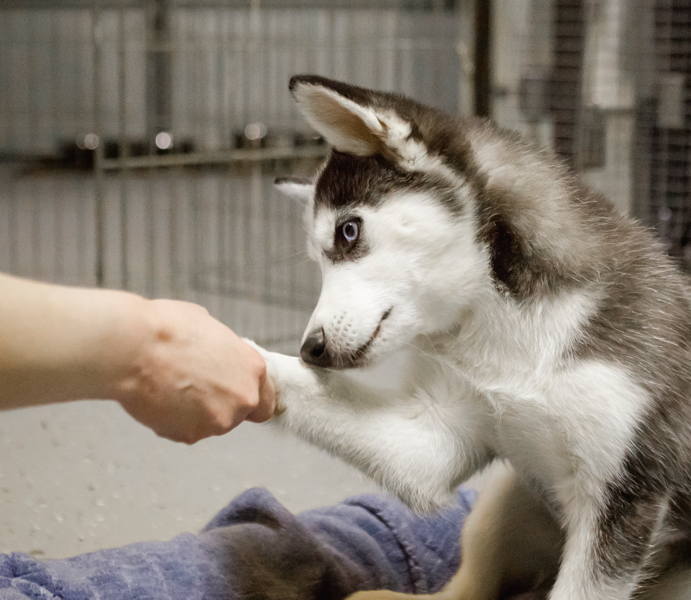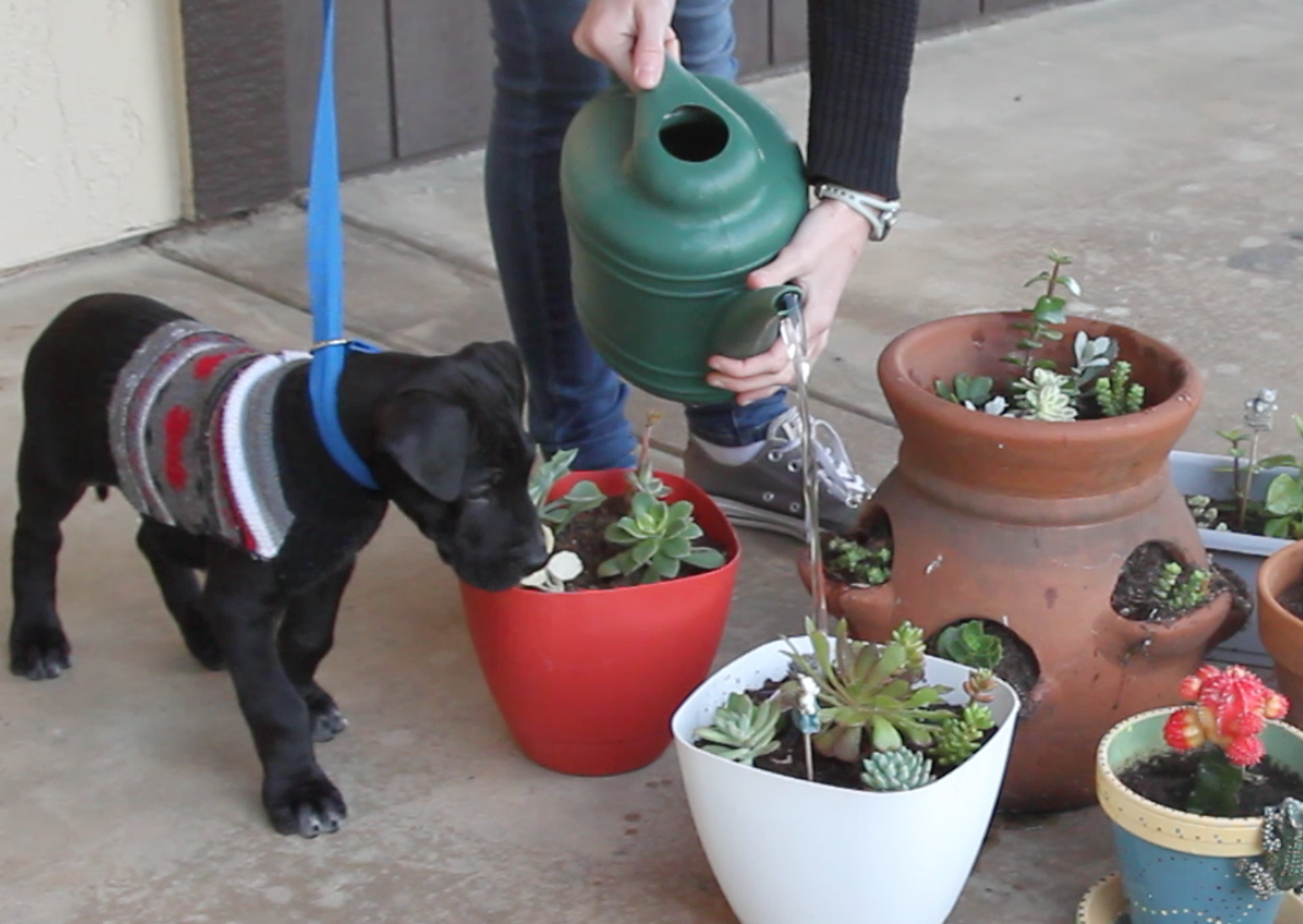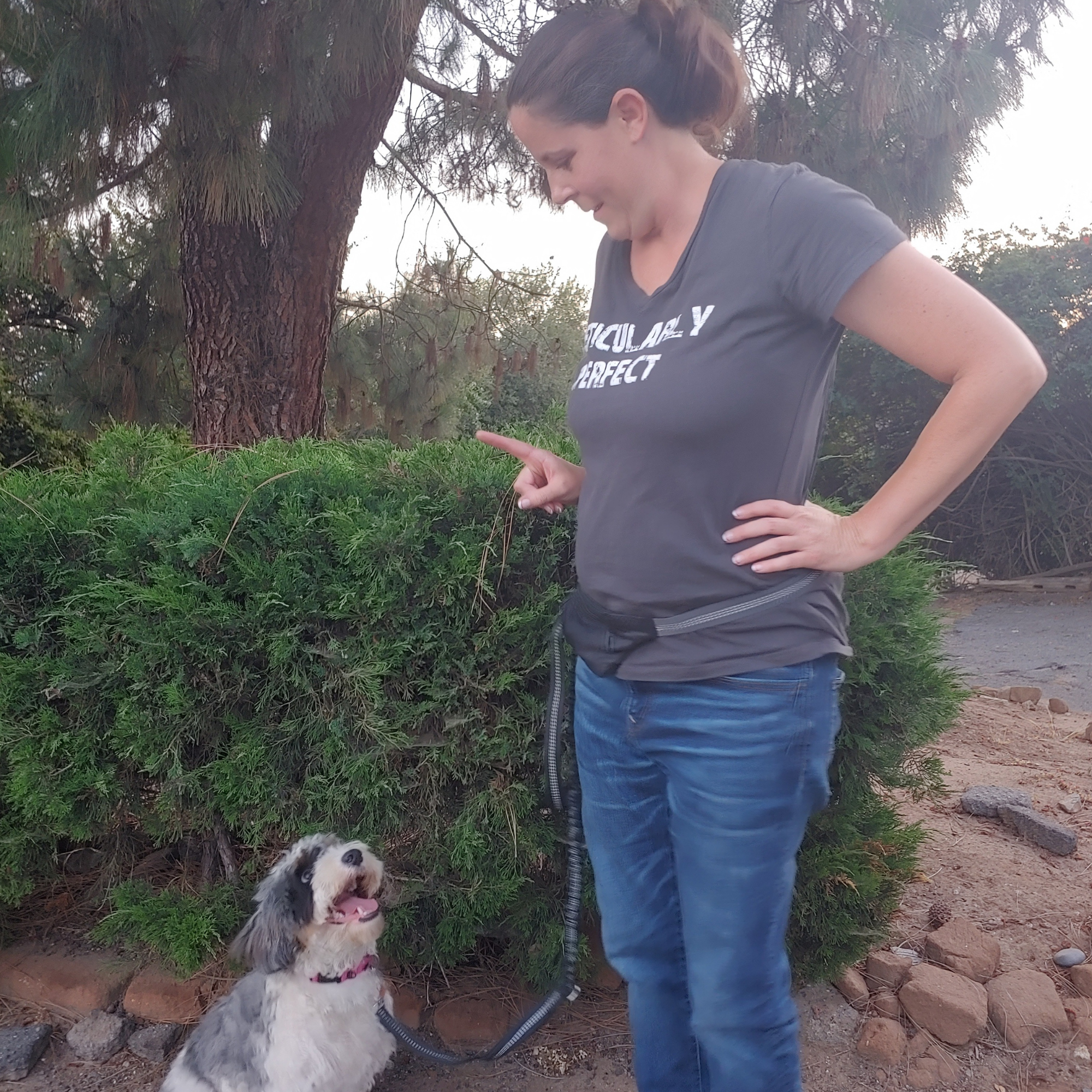6 Easy Steps for Potty Training Your Puppy: A Simple Guide
Hello! It’s me again, Allison, your opinionated dog trainer 😏 And I have opinions on potty training, too! For successful potty training, you need to repeat a positive routine to create a lasting habit pattern. Guess what? This takes time, patience, and effort! But if you’re ready to dive in and do the dirty work of potty training, here’s 6 steps to follow.
Reference Sections:
- Create a Space
- Set a Routine
- Use a Leash
- Reinforce Good Behavior
- Correct Accidents Properly
- Relax and Enjoy the Process
Create a Space
Your pup should have a safe place to stay between potty breaks and playtime to sleep, eat, and relax. Crates and pens are perfect for this! Get the puppy used to being in their safe, enclosed area for short periods of time to avoid separation anxiety and to structure their routine. Give food, treats, and puppy-safe toys in their area, so it becomes their “happy place.” Rotate toys often, and the pup will want to go in and check out what’s new!
Crates and pens should never be a punishment. Dogs prefer not to potty where they eat and sleep, so the area should be right for your dog’s size and accommodate their necessities. Think small yet comfortable, to help them learn faster. Access to water, regular feedings, frequent potty breaks, and lots of exercise will help the puppy develop trust and confidence.


Set a Routine
Get a puppy when you have at least 3 full days home. Take a staycation, adopt before a 3-day holiday, hire help, whatever! Those first few days are crucial to setting routines, boundaries, and good habit patterns.
Once the puppy is home, set a timer for every hour to take the puppy outside to potty. This helps you gauge how long they can actually hold it, in just the first couple of tries. Reset the timer AFTER your dog goes potty and give lots of playtime before heading back to their area.
When there are only sporadic accidents, if any, extend the timer to 1.5 hours, then 2 hours, then 3, and so on. Do not lengthen the timer until the puppy is ready, or you’ll set yourself back. If you stay consistent, the pup should be able to hold it for about 4 hours by the end of the 3rd day, but all dogs are different!
Some will take longer to “get it,” and the younger the pup, the longer it will take to physically develop bladder control. If your timer goes off and the pup is asleep, reset for a short duration and PAY ATTENTION. Puppies will often pee right after waking, so take them out right when they wake up to keep the routine solid.
To help the puppy sleep longer overnight, pick up their water dish 30 minutes before bed and cover the crate with a blanket to minimize stimulation. Young puppies will need midnight potty breaks regardless, so prepare to have a nighttime potty routine, and never neglect their basic needs.
What about potty pads? I generally advise against using potty pads as they look like carpet, bath mats, and other areas you do not want the puppy to go. They seem convenient, but can hinder long term learning if not used correctly.
💡Pro Tip: Keep the puppy in your own home and yard and avoid grass, mud, and public settings until fully vaccinated. Contact your vet for more information.
Use a Leash
Even though you are only walking from the crate to the potty area, use a leash to get the puppy familiar with the feel of it. Lead the way, going in and out of doors first.
Never drag your dog. You can learn proper leash corrections in basic training, but for now, the leash is simply meant to set a boundary for the pup… right next to you!
It also defines the area appropriate for going potty, as the pup can’t wander off and go anywhere they please. You can remove the leash for playtime, but don’t let the puppy off-leash inside the house until they are potty trained. Minimize accidents and keep your routine consistent.
💡 Pro Tip: Having the pup follow you everywhere will help with the “heel” command later on.


Reinforce
So you have an area set, leash ready, and you’ve got a timer! Now what? Everything you do is a learning opportunity, so take advantage of key moments and reinforce good behavior – literally right out of the gate!
When you go to the crate, don’t over-excite your dog. Be calm and quiet, and give the puppy a chance to calm down on their own before you open the door. This helps them learn not to charge out and that calm is the preferred state. Staying calm helps minimize accidents, but the primary goal is to potty outside, so make this practice secondary to potty training. Utilize this technique more as the puppy grows and develops. When at the potty area, use a command like “go potty.” Say it in a neutral voice tone without any facial expressions and use your dog’s name frequently: “Rex, go potty. Go potty, Rex.”
If the puppy goes potty, make a very happy facial expression, and praise in a high-pitched voice tone: “Good boy go potty, Rex!” You can give a healthy treat or piece of kibble while praising to help reinforce good behavior.
Outside is exciting! Some dogs will have trouble focusing, and you need to give them time, otherwise they will go potty in a less exciting place – inside. So be patient and watch for when you see your dog might go potty. Start saying the command “Go potty” and give praise when they do. Whenever the puppy goes potty, reset your timer. If the pup just won’t go, set a short timer to minimize chances of an accident.
💡Pro Tip: Use Training Treats in moderation. You can use kibble and praise and affection as rewards too!
Correct
Whether it’s attending a meetup, taking an online course, or reading a book, learning something new makes us feel like we’re progressing in life. Dogs love to learn, too!💡
💡Pro Tip: Even if your dog doesn’t have behavioral issues, teaching them a new trick or command is an excellent way to bond and give them a mental workout. Short, fun training sessions at home can help keep both you and your dog mentally sharp.
Training not only strengthens your bond, but it also keeps your dog healthy physically, emotionally, and mentally!

Relax
Whether it’s attending a meetup, taking an online course, or reading a book, learning something new makes us feel like we’re progressing in life. Dogs love to learn, too!💡
💡Pro Tip: Even if your dog doesn’t have behavioral issues, teaching them a new trick or command is an excellent way to bond and give them a mental workout. Short, fun training sessions at home can help keep both you and your dog mentally sharp.
Training not only strengthens your bond, but it also keeps your dog healthy physically, emotionally, and mentally!

Now that you know what to expect, you can be better prepared and make it fun! The more positive the experience is for both you and your dog, the more easily you will create good, lasting habits. Be proud of minor accomplishments – celebrate your successes! – and work toward your goal of a well-behaved pup!
💡Pro Tip: Fully vet dog sitting and daycare companies. Look for background checks, licensing, bonding and insurance, years in the business, and rave reviews.
I hope these tips have given you a good road map for potty training! Follow the steps to fewer loads of laundry and carpet shampoos, and go from April showers on to smelling those May flowers.
Need help with your pup?
We understand that balancing everything on your plate can be overwhelming. Let us take some of the pressure off. Reach out to us for all your training needs, and let’s make life with your dog even better!

